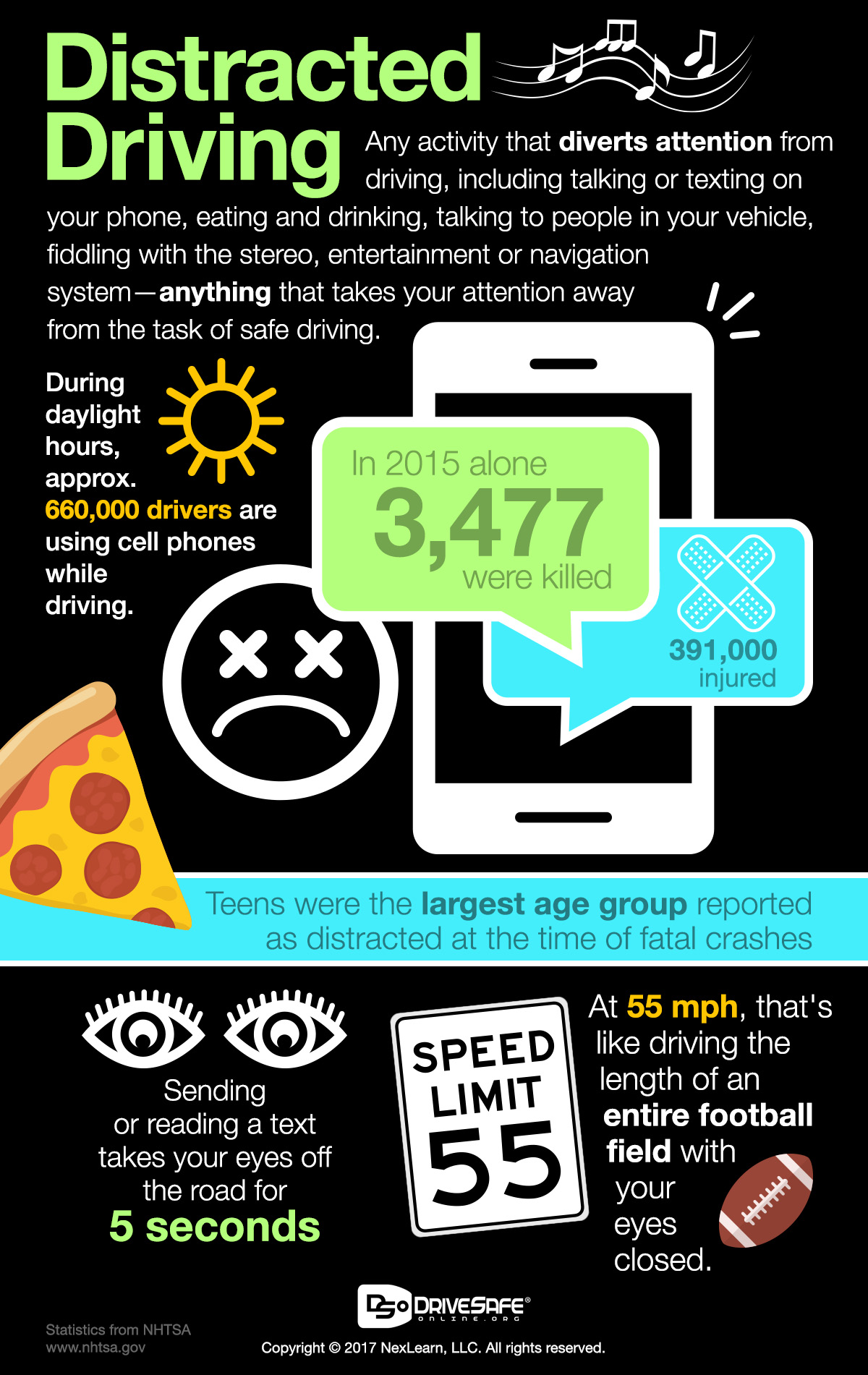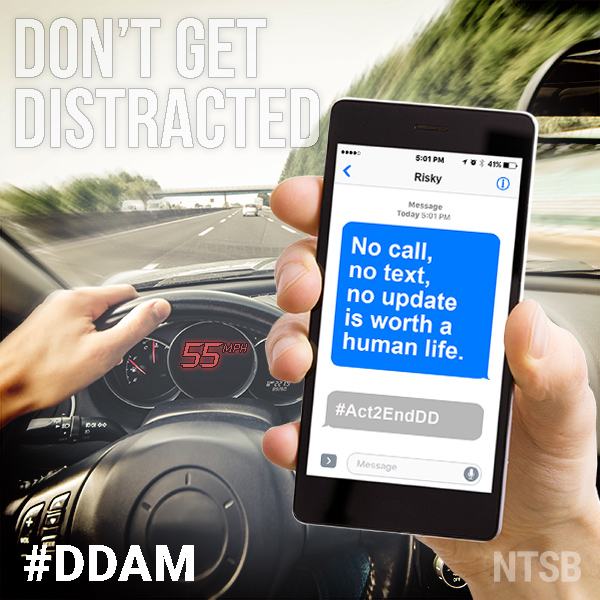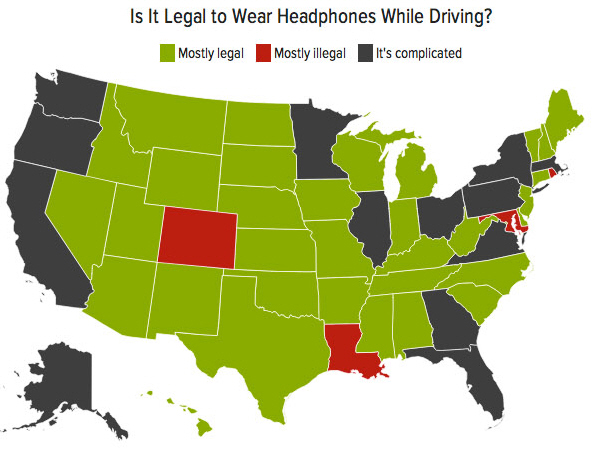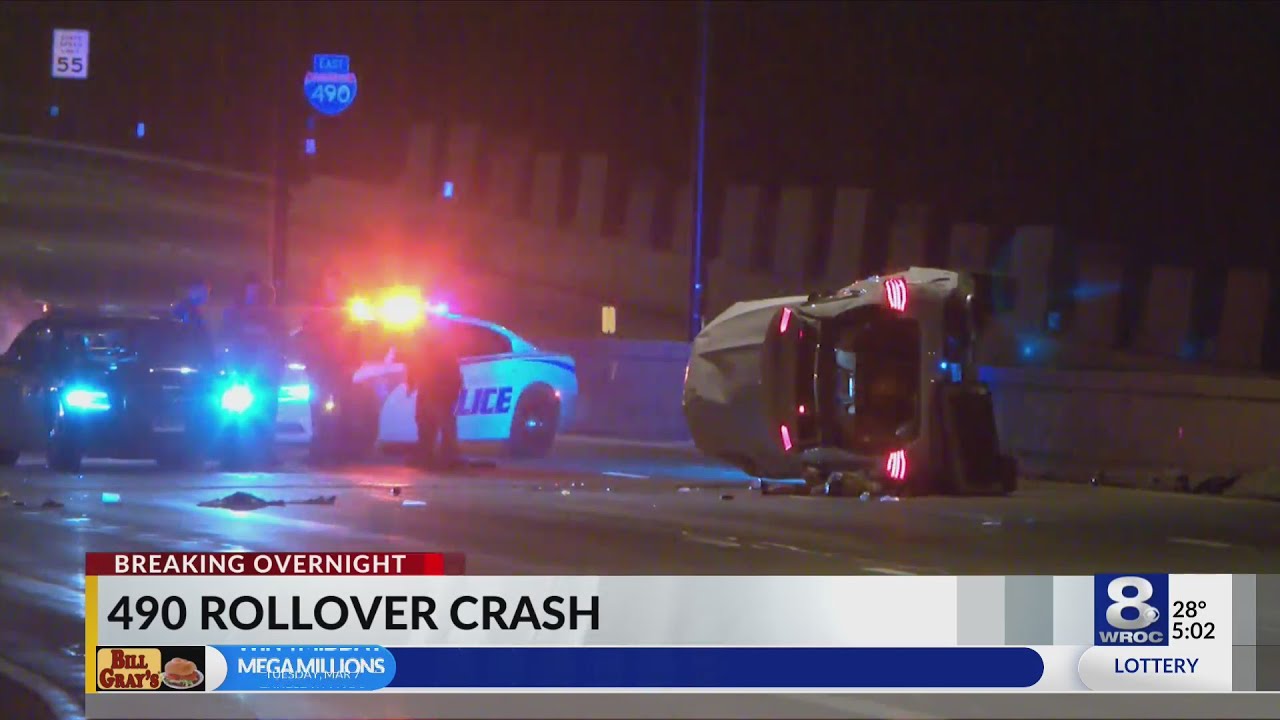Understanding the Scope and Impact of Distracted Driving
Distracted driving has become a pressing issue that affects countless lives and poses a significant threat to road safety. With the rapid advancement of technology and the increasing demands of our modern lives, distractions behind the wheel have reached an alarming level.
The scope of distracted driving is vast, encompassing various activities that divert a driver’s attention from the primary task of operating a vehicle safely. While many associate distracted driving with cellphone use, it extends far beyond that. Eating, grooming, adjusting the radio, interacting with passengers, and even daydreaming can all contribute to this dangerous behavior.
The impact of distracted driving is devastating, both on an individual and societal level. According to the National Highway Traffic Safety Administration (NHTSA), in the United States alone, distracted driving claimed the lives of 3,522 people in 2021. This staggering statistic highlights the urgent need to address the issue and raise awareness about its consequences.
Beyond the loss of life, distracted driving also leads to a significant number of injuries, property damage, and financial burdens. The aftermath of a distracted driving accident can be physically, emotionally, and financially draining for all parties involved. Families are torn apart, careers are disrupted, and communities are left grappling with the consequences.
Distracted driving affects everyone on the road, not just the distracted driver. Innocent pedestrians, cyclists, and other motorists become vulnerable targets when someone behind the wheel is not fully focused on the task at hand. The ripple effect of one person’s distraction can have far-reaching consequences for an entire community.
This blog post aims to shed light on the profound impact of distracted driving and provide valuable insights into how we can combat this growing problem. By understanding the scope and consequences of distracted driving, we can work towards creating a safer road environment for all and ultimately save lives.
Prevalence of distracted driving: Statistics and real-life examples
Distracted driving has become an increasingly prevalent issue in today’s fast-paced world. With the rise of smartphones and other technological advancements, drivers are more easily tempted to divert their attention from the road. The consequences of this dangerous behavior are staggering, as lives are lost and safety is compromised.
Statistics paint a grim picture of the prevalence of distracted driving. The Centers for Disease Control and Prevention (CDC) reports that approximately 9 people are killed and more than 1,060 injured each day in accidents involving distracted drivers.
Real-life examples serve as a harsh reminder of the devastating impact of distracted driving. Take the case of Sarah, a 32-year-old mother of two. While driving her children to school one morning, she glanced at her phone to read a text message. In that split second, her car veered off the road, resulting in a tragic accident that claimed the life of her youngest child. Sarah’s story is a heartbreaking illustration of how a simple distraction can forever alter lives.

Alarming Distracted Driving Stats You Need to Know- DriveSafe Online®
Another example is John, a 45-year-old professional who often finds himself multitasking behind the wheel. On one occasion, as he was trying to eat his breakfast while driving to work, his attention was divided. In a moment of distraction, he failed to notice the red light ahead, causing a collision with another vehicle. The consequences were not only physical injuries but also the emotional trauma experienced by both drivers involved.
These statistics and real-life examples highlight the urgent need to address the issue of distracted driving. It is not just a personal choice but a societal responsibility to prioritize safety on the roads. By raising awareness, implementing stricter laws, and promoting responsible driving habits, we can work towards reducing the alarming toll that distracted driving takes on lives and safety.
Types of distractions that contribute to accidents
Distracted or inattentive driving has become a prevalent issue on our roads, with devastating consequences for lives and safety. Understanding the types of distractions that contribute to accidents is crucial in addressing this alarming problem.
Visual distractions
One of the most common distractions is visual distractions. These occur when drivers take their eyes off the road, even for a split second, to focus on something else. It could be anything from reading a text message or checking a navigation system to glancing at an advertisement or looking at a passenger. These seemingly innocuous actions can have catastrophic consequences, as the driver’s attention is diverted away from the task of driving.
Cognitive distraction
Cognitive distraction occurs when a driver’s mind is not fully focused on the road. Daydreaming, engaging in deep conversations, or being preoccupied with personal issues all fall under this category. Even though the driver’s eyes may be on the road, their thoughts are elsewhere, impairing their ability to react to potential dangers.
Physical distractions
Manual distractions involve physically taking one or both hands off the steering wheel. Common examples include eating or drinking while driving, adjusting the radio or climate controls, or reaching for objects inside the vehicle. These seemingly harmless actions may seem minor, but they can lead to a loss of control and increase the risk of accidents.
Auditory distractions
These occur when a driver is listening to loud music, talking on the phone without a hands-free device, or engaging in other activities that divert their attention from the road. While these distractions may not involve taking one’s eyes off the road, they still impair the driver’s ability to focus and react promptly to potential hazards.
Dangers and consequences of distracted driving
Distracted driving has become a prevalent issue in our society, posing a significant threat to lives and safety on the roads. The dangers and consequences associated with this reckless behavior cannot be overlooked or underestimated.
One of the primary causes of distracted driving is the use of mobile devices while behind the wheel. Whether it’s texting, talking on the phone, or browsing social media, these actions divert the driver’s attention away from the road, leading to devastating consequences. According to studies, engaging in any form of phone use while driving increases the risk of accidents by four times.
Distractions extend beyond just phone usage. Activities like eating, grooming, adjusting the radio, or attending to children can also take a driver’s focus away from the road. Even a split-second distraction can have severe repercussions, potentially resulting in collisions, injuries, and even fatalities.
The consequences of distracted driving are far-reaching and can impact not only the driver but also passengers, pedestrians, and other motorists sharing the road. Lives are irrevocably changed in an instant due to the negligent actions of a distracted driver. Families are left devastated, dealing with emotional trauma and loss that could have easily been prevented.
Legal repercussions await those who choose to engage in distracted driving. Many jurisdictions have implemented strict laws and penalties to deter this dangerous behavior. Fines, license suspensions, and even jail time can be imposed on individuals found guilty of distracted driving, highlighting the seriousness of the offense.
Understanding the impact on lives: Personal stories
Understanding the impact of distracted driving on lives is crucial in raising awareness about this alarming issue. While statistics and numbers provide valuable insights, personal stories, and testimonies bring a human element that truly resonates with readers.
One such story comes from Sarah, a survivor of a distracted driving accident. She vividly recalls the horrifying moment when a driver, distracted by their phone, collided with her car. The impact left her with serious injuries and forever changed her life. Sarah’s story is a stark reminder of the devastating consequences that can occur in a split second due to distracted driving.
Another powerful testimonial comes from John, who lost his teenage daughter in a distracted driving incident. Through his heart-wrenching account, he shares the immeasurable pain and grief that he and his family endure every day. John’s story serves as a reminder that behind every statistic, there are real lives that are shattered due to a momentary lapse in attention.
These personal stories and testimonies humanize the issue of distracted driving, making it more relatable and impactful. They serve as cautionary tales, urging readers to think twice before reaching for their phone while behind the wheel. By sharing these stories, we hope to inspire change and promote safer driving habits.
Insurance Rates and healthcare expenses
The economic cost of distracted driving extends far beyond the immediate consequences of accidents. Insurance rates and healthcare expenses related to these incidents can have a significant impact on individuals, families, and society as a whole.
Insurance Cost of Distracted Driving
Insurance rates are directly affected by the prevalence of distracted driving. When accidents caused by distracted driving occur, insurance companies often have to pay significant amounts for property damage, medical expenses, and legal settlements. To compensate for these payouts, they may increase premiums for all policyholders. This means that even responsible drivers who do not engage in distracted driving may end up paying higher insurance rates.
Healthcare Cost of Distracted Driving
Healthcare expenses related to distracted driving accidents can be staggering. Victims of these accidents often require extensive medical treatment, including emergency services, surgeries, rehabilitation, and ongoing care. These expenses can quickly add up, placing a heavy burden on individuals, families, and healthcare systems. Additionally, the emotional and psychological toll on the victims and their loved ones cannot be overlooked.
Workplace Cost of Distracted Driving
Distracted driving accidents can result in lost productivity and missed workdays. When individuals are injured or unable to work due to accident-related injuries, it affects not only their own financial stability but also the overall economy. Employers may face increased costs related to disability benefits, temporary staffing, and decreased productivity.
Legal Implications and Penalties for distracted driving
When it comes to distracted driving, the legal implications and penalties cannot be ignored. Governments and law enforcement agencies have recognized the serious threat that distracted driving poses to public safety, and as a result, have implemented strict laws and penalties to discourage this dangerous behavior.
The specific legal implications and penalties for distracted driving vary from one jurisdiction to another, but the message remains consistent – distracted driving is not only irresponsible, but it’s also against the law. In many places, distracted driving is considered a traffic offense, and individuals caught engaging in this behavior can face hefty fines, license suspension, and even imprisonment in severe cases.

Don’t Get Distracted Driving; image via NTSB
The penalties for distracted driving often depend on the severity of the offense and the jurisdiction’s laws. For instance, some areas have implemented graduated penalties, where the fine increases with each subsequent offense. Repeat offenders may face more severe consequences, including longer license suspensions or mandatory participation in educational programs aimed at raising awareness about the dangers of distracted driving.
Distracted driving can also have long-term consequences on an individual’s driving record and insurance rates. Insurance companies often view distracted driving as a high-risk behavior, resulting in increased premiums or even denial of coverage for individuals with a history of distracted driving incidents.
Efforts to combat distracted driving: Laws, campaigns, and technological solutions
Efforts to combat distracted driving have become increasingly prominent in recent years, as society grapples with the alarming toll it takes on lives and safety. Recognizing the dangers posed by distracted driving, governments around the world have implemented laws and regulations to deter this risky behavior.
These laws typically prohibit the use of handheld devices while operating a vehicle and encourage drivers to focus on the road. Penalties for violating these laws can range from fines to license suspensions, depending on the severity of the offense and jurisdiction.
Numerous campaigns have been launched to raise awareness about the dangers of distracted driving. These campaigns aim to educate drivers about the risks associated with various distractions, such as texting, talking on the phone, eating, or adjusting in-car technologies. By highlighting real-life stories and statistics, these campaigns seek to change attitudes and behaviors, ultimately reducing the incidence of distracted driving.

Distracted driving billboard; image via dallasnews.com
Technological solutions have also emerged as a promising tool in the fight against distracted driving. Advances in smartphone technology have made it possible to develop apps and features specifically designed to combat this issue. For example, some smartphones now have a “Do Not Disturb While Driving” mode that automatically disables notifications and sends automated responses to incoming calls or messages, notifying the sender that the person is driving and will respond later.
Other technological innovations include smartphone apps that can detect when a person is driving and limit the functionality of the device accordingly. These apps can block incoming calls and messages, as well as discourage any form of phone use while driving.
While these efforts are commendable, combating distracted driving requires a collective commitment from individuals, organizations, and society as a whole. It is crucial for drivers to prioritize safety and eliminate distractions while on the road. By adhering to laws, supporting awareness campaigns, and utilizing technological solutions, we can work together to make our roads safer and prevent the devastating consequences of distracted driving.
Promoting awareness and education
Promoting awareness and education about the dangers of distracted driving is crucial in reducing the alarming toll it takes on lives and safety. By following these tips, drivers can actively work towards avoiding distractions and making the roads safer for everyone.
- Put your phone away: The most common distraction while driving is the use of mobile devices. To avoid temptation, put your phone on silent mode or place it in a secure spot like the glove compartment, where it won’t be within reach.
- Plan ahead: Take care of any necessary tasks before getting behind the wheel. Set your GPS, adjust your mirrors, and secure any loose items in the vehicle. By preparing in advance, you can minimize the need for multitasking while driving.
- Avoid eating and drinking: Eating or drinking while driving can divert your attention away from the road. If you’re hungry or thirsty, pull over at a safe location to consume your food or drink.
- Limit conversations: Engaging in long or emotionally charged conversations can be distracting. Keep conversations to a minimum while driving, and if necessary, use a hands-free device for safer communication.
- Utilize technology features: Many modern vehicles come equipped with features that can help reduce distractions. Take advantage of voice commands for tasks like making calls or changing music. Utilize Bluetooth connectivity for a hands-free experience.
- Secure children and pets: It’s important to ensure that children and pets are properly restrained in the vehicle. Unrestrained movement can cause distractions and increase the risk of accidents. Use appropriate car seats, seat belts, or pet carriers to keep everyone safe.
- Take regular breaks: Long drives can be tiring, leading to decreased focus and attention. Schedule regular breaks to rest, stretch, and rejuvenate. This will help you stay alert and focused while on the road.
Taking collective responsibility to make our roads safer
As we conclude our post on the alarming toll of distracted driving, we hope that it has served as a wake-up call to the dangers and consequences of this dangerous behavior. The statistics and stories shared highlight the devastating impact that distracted driving can have on lives and safety. It is up to each and every one of us to take responsibility and make a commitment to prioritize safety on the road.
By spreading awareness, advocating for stricter laws, and practicing mindful driving habits ourselves, we can work together to reduce the incidence of distracted driving and protect ourselves and others on the road. Remember, no text or notification is worth risking a life. Let’s drive distraction-free and make our roads safer for everyone.



